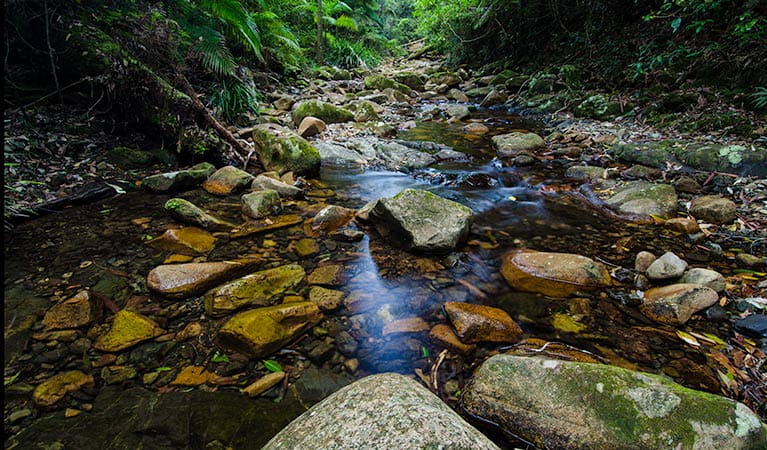Willi Willi National Park
Overview
A scenic drive from Wauchope brings you to beautiful Willi Willi National Park, where you'll find ancient gondwana rainforest, waterfalls, and relaxing picnic spots.
Read more about Willi Willi National Park
Willi Willi National Park forms an extensive mountain wilderness on a spectacular section of the Great Dividing Range. The park protects some of the best subtropical and warm temperate rainforests in Australia, and is part of the Gondwana Rainforests of Australia World Heritage Area. The landscape is typically characterised by deeply dissected forest-lined valleys and lush groundcover.
Experience a delightful picnic area located on the picturesque Wilson River, deep in the forest. Choose from three walking tracks through sub-tropical and warm temperate rainforest, or meander along the river to a sparkling waterfall and plunge pool.
This diverse park offers everything for the naturalist; protected species of plants, birds and animals as well as a beautiful, thriving rainforest environment. And whether you prefer to drive, walk, or picnic, it’s all here waiting for you in one of the most beautiful national parks in New South Wales.
Local alerts
For the latest updates on fires, closures and other alerts in this area, see https://www.nationalparks.nsw.gov.au/visit-a-park/parks/willi-willi-national-park/local-alerts
Contact
- in the North Coast and Country NSW regions
Willi Willi National Park is always open but may have to close at times due to poor weather or fire danger.
-
-
Kempsey office
02 6561 6700
Contact hours: Monday to Friday, 9am to 4.30pm. - 247 Old Station Rd, Verges Creek NSW 2440
-
Email: npws.hastingsmacleay@environment.nsw.gov.au
-
Kempsey office
Visitor info
All the practical information you need to know about Willi Willi National Park.
Map
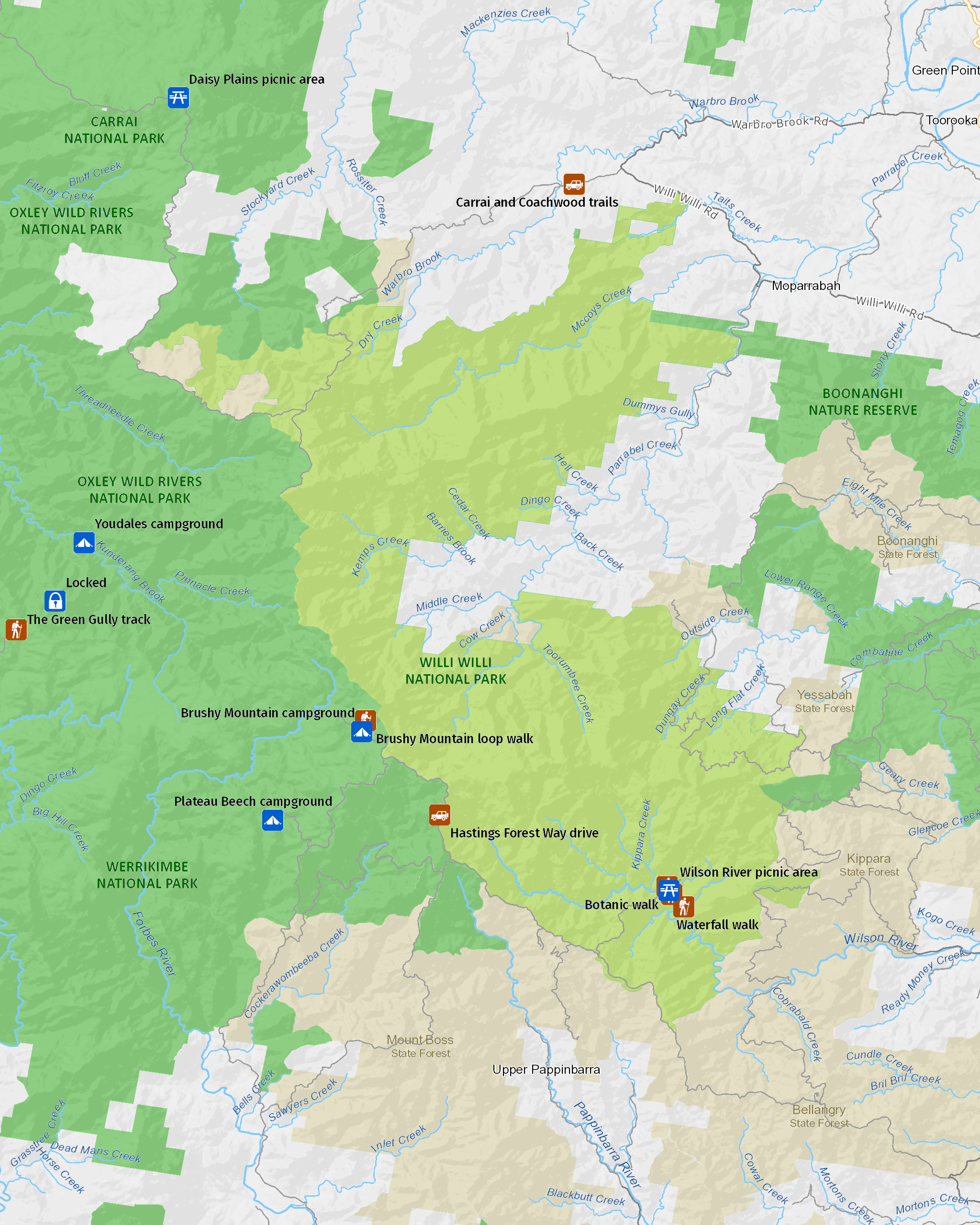
Map legend

Getting there and parking
Get driving directions
From Wauchope:
- Take the Beechwood Road to Beechwood
- Then turn onto Bellangary Road
- Turn onto Hastings Forest Way
- Turn into Wilson River Road to reach the picnic area
From Kempsey:
- Take the Armidale Road from West Kempsey
- After 35km turn onto Carrai Road at Toorooka near Willawarrin
- Turn onto Coachwood Road at Kookaburra
Parking
- Wilson River picnic area See on map
By bike
Check out the Bicycle information for NSW website for more information.
By public transport
Willi Willi National Park is 50km from closest public transport at Kempsey or Wauchope. For information about public transport options, visit the NSW country transport info website.
Best times to visit
There are lots of great things waiting for you in Will Willi National Park. Here are some of the highlights.
Spring
Birds are plentiful in the rainforest so it's a great time for birdwatching.
Summer
Meander along the cool Waterfall walk where you can take a refreshing swim.
Weather, temperature and rainfall
Summer temperature
Average
26°C and 28°C
Highest recorded
42.2°C
Winter temperature
Average
16°C and 20°C
Lowest recorded
-5.1°C
Rainfall
Wettest month
January
Driest month
July
The area’s highest recorded rainfall in one day
234.6mm
Facilities
Maps and downloads
Prohibited
Pets
Pets and domestic animals (other than certified assistance animals) are not permitted. Find out which regional parks allow dog walking and see the pets in parks policy for more information.
Smoking
NSW national parks are no smoking areas.
Nearby towns
Wauchope (42 km)
Wauchope is great base for exploring nearby national parks that are part of the Gondwana Rainforests of Australia World Heritage Area. Follow the Hastings Forest Way to Werrikimbe National Park, a rugged wilderness of outstanding beauty spread with short and long walks. Willi Willi National Park is a rainforest mountain park with three beautiful walking tracks that follow the river and lead to a sparkling waterfall.
Port Macquarie (63 km)
Vibrant Port Macquarie is surrounded by beautiful waterways - the Hastings River, canals, creeks, bays and the Pacific Ocean. The city also has a five-star collection of golden-sand beaches stretching from Port Macquarie Beach to Town Beach and north along the 16-km swathe of North Beach.
Kempsey (73 km)
Kempsey is a historic river town close to national parks and majestic beaches. Kempsey is a convenient place for an overnight stop for anyone driving between Sydney and the North Coast.
Learn more
Willi Willi National Park is a special place. Here are just some of the reasons why:
An ancient story
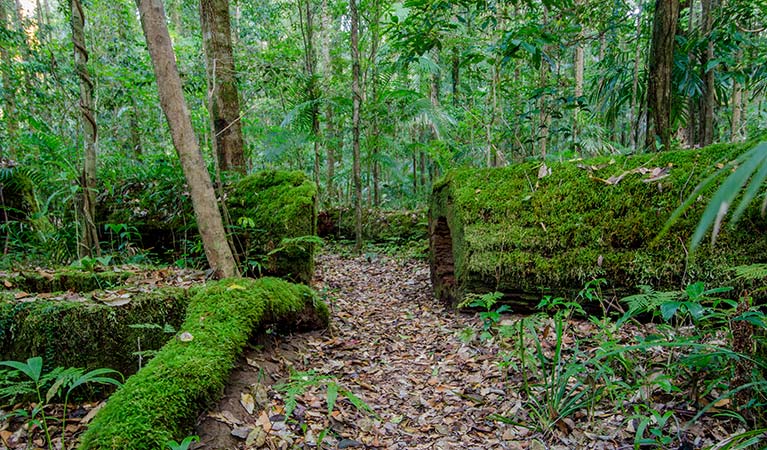
Today’s lush rainforests are direct relations of the ancient forests of Gondwana within the Antarctic Circle. Around 80 million years ago, the ancestral continent broke up and Australia started moving north, which eventually reduced most of the rainforests to a narrow strip along south-eastern Australia. As well as World Heritage-listed rainforests, the park protects a diversity of vegetation, including old growth eucalypt forests and open heath. This diverse vegetation provides food and shelter for a medley of creatures; small ground mammals and bats, the endangered Hastings River mouse, the yellow-bellied glider. Australia’s largest marsupial carnivore, the spotted-tailed quoll, also calls Willi Willi home.
- Botanic walk A short stroll not far from Wauchope, Botanic walk heads through World Heritage rainforest and is great for birdwatching and relaxing with the family over a picnic.
The land provides balance
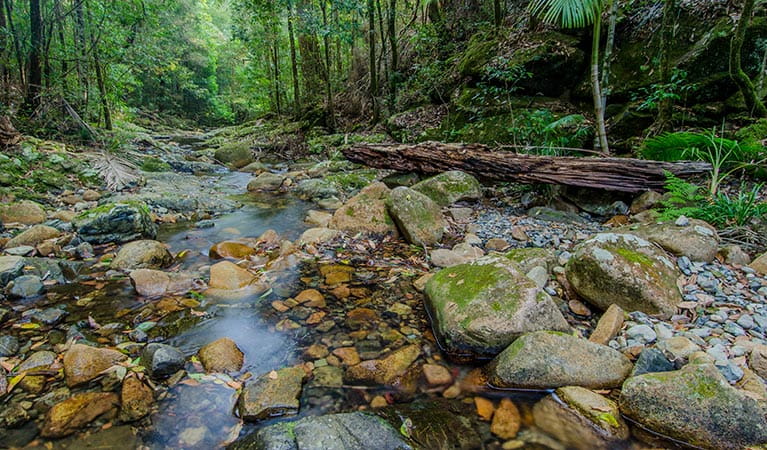
The name Willi Willi National Park is derived from the local Dunghutti Aboriginal word 'willai' meaning possum. The repetition of the word indicates a plural form translating roughly as “many possums”. Dunghutti Aboriginal Nguloongooras (wise elders) would perform secret ‘increase rituals’ on sacred mountain tops such as Kemps Pinnacle, near the western boundary of the park, to extend their food supply. Placing limits on certain species during seasonal variations allowed for a natural increase in food resources. It was the wish of their great deity, Woormprahl, for them to create this balance with nature.
Ground beneath our feet
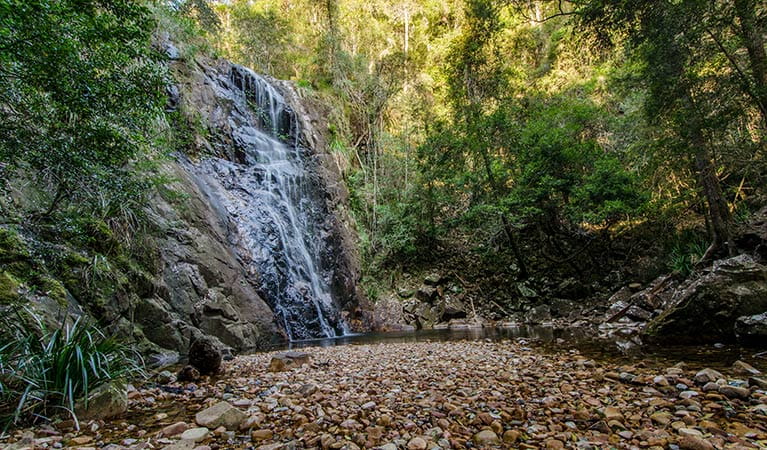
The geology of Willi Willi National Park is for the most part mudstone, sandstone and conglomerate, making the terrain exceptionally steep and rugged. These rocks are more resistant to erosion than the sedimentary beds, making them the cause of such rippled landscapes and the spectacular angles of the park.
- Hastings Forest Way touring route See Gondwana rainforest, go camping, birdwatching and enjoy amazing scenery on a scenic drive through Hastings Forest Way touring route near Port Macquarie and Wauchope.
- Waterfall walk This medium-difficulty trail, not too far from Kempsey, walks you through flourishing World Heritage-listed rainforest of Willi Willi National Park. You can also picnic by waterfalls and swim in a natural pool.
- Wilson River picnic area Wilson River picnic area near Wauchope is the ideal place to begin your driving or walking adventures. Bring a picnic, explore rainforests on a walking track and swim near the waterfall.
Education resources (1)
What we're doing
Willi Willi National Park has management strategies in place to protect and conserve the values of this park. Visit the OEH website for detailed park and fire management documents.

